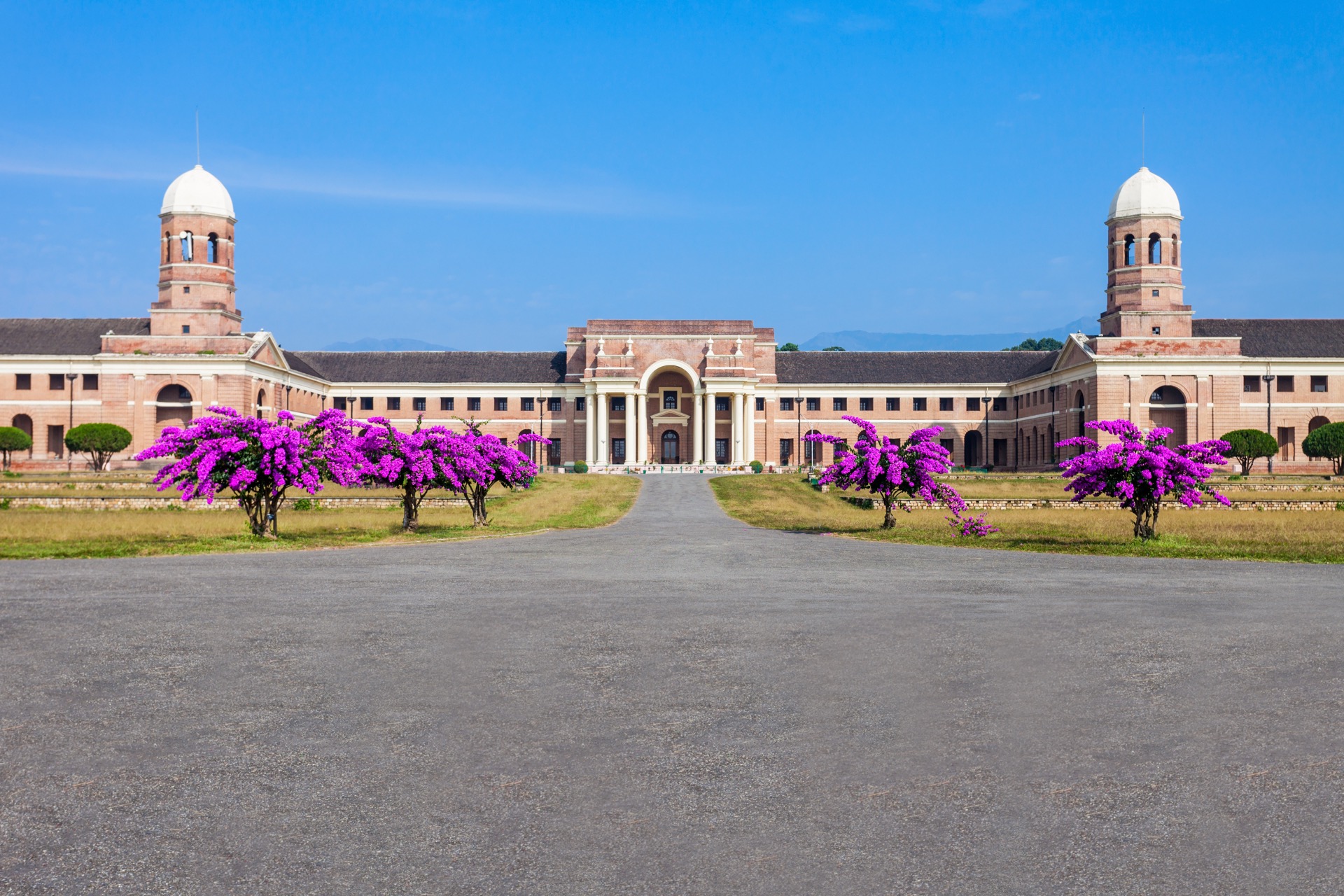
Indian Forest forests Tinbergen
In the year 2019, Milan witnessed an extraordinary transformation. Rising 27 stories into the sky, two residential towers transformed the city’s horizon—not with steel and glass but rather with a vibrant, living forest. These vertical urban forests, hosting over 900 trees and 20,000 plants, function as green powerhouses of the city, absorbing 30 tonnes of carbon-dioxide each year which is equivalent to removing 200 cars off the road. But here is what’s truly astonishing: if every building in Milan employed this approach, the city could absorb the carbon footprint of its entire population within a year. This isn’t just an architectural achievement; it’s a glimpse of how nature’s oldest mechanism might hold the potential key to our planet’s green and sustainable future.
As our cities continue to expand and climate crisis worsens, we stand at a pivotal juncture. Current strategies for achieving net-zero carbon emissions prominently rely on technology-based solutions and industrial scale transformations. However, nature has been perfecting the art of carbon capture for billions of years through evolution. By reimagining our cities as living, breathing ecosystems, we can tap into this natural technology to combat climate change while making cities more liveable.
Understanding Urban Forests: Nature’s Response to City Emissions
While many view forests as vast woodland areas far from human civilization. Yet, the potential for forest development within our urban environment is extraordinary and largely untapped. Urban forests are much more than just scattered trees along city streets. It is a complex, well-structured ecosystem that embraces all the trees, shrubs, and other vegetation within city boundaries—from park woodlands and community gardens to green rooftops and vertical gardens on buildings. These green networks include trees in public spaces, private yards, conservation areas, and even vacant lands.
Urban forests are unique because they are closely integrated with the human infrastructure: they work in harmony with buildings, roads, and utility systems to provide a sustainable urban environment. Unlike natural forests, which occur naturally, an urban forest is a construct, deliberately built and maintained, with the ultimate intention of maximising all its environmental and social benefits to city dwellers. These green spaces act as the lungs of our cities, filtering out the air pollutants, reducing urban heat, and most importantly—capturing and storing carbon dioxide, making them crucial allies in our quest for net-zero emissions.
Consider this: one mature tree can absorb up to 48 pounds of carbon dioxide per year. Now multiply that by millions of trees strategically planted throughout a city. The numbers become staggering. But the magic doesn’t stop at carbon capture. Urban forests create a cascading effect of environmental benefits that exponentially contribute to our net zero goals.
The Multiplier Effect: Beyond Carbon Capture
Urban forests don’t just absorb carbon footprints—they create a multiplier effect that amplifies their impact on emissions reduction:
- Natural Cooling: Urban forests offer natural cooling through shade and evapotranspiration, decreasing the need for air conditioning and thereby reducing energy consumption. In fact, studies reveal that strategic tree placement may help reduce air conditioning requirements in multi-storey buildings by up to 30%.
- Windbreaks: Trees are natural windbreaks, which reduces heating requirements during winters. This dual seasonal benefit can significantly reduce a building’s carbon footprint year-round.
- Improved Air Quality: They enhance air quality by filtering airborne pollutants, thus reducing the strains on artificial air filters, which consume energy and contribute to carbon emissions.
- Water Management: Trees and green spaces efficiently absorb rainwater, which ultimately reduces risks of urban flooding and lowers the energy required for modern water management systems.
- Economic Benefits: Urban forests can stimulate local economies in a positive manner by creating job opportunities in sectors such as tree planting, maintenance, and eco-tourism industries, providing additional incentives for their development.
Innovation Zone: Smart Urban Forest Design
The key to maximising the impact of urban forests lies in smart design and modern innovation. Modern-day urban forestry isn’t just about planting trees—it’s about building integrated ecosystems that work in harmony with urban environment.
- Vertical forests: The incorporation of trees and plants into building design allows the creation of vertical forest structures that actively consume carbon dioxide while offering natural insulation.
- Smart species selection: Use of data analytics in the selection of tree species that maximises carbon absorption while minimising maintenance requirements and water consumption.
- Connected green corridors: Creating networks of green spaces that allow wildlife to flourish while optimising carbon capture across entire city sections.
Human Factor: Social Benefits and Carbon Reduction
Perhaps the most neglected aspect of urban forester is its influence on human behaviour. As cities become greener, people naturally gravitate toward outdoor spaces and activities that have lower carbon footprints, which creates a positive feedback loop:
- More people walking and cycling instead of driving
- Increased engagement in community environmental activities
- More public support for broader climate measures
- Improved mental health, resulting in reduced energy-intensive healthcare needs
Implementation: From Vision to Reality
Achieving this transformation requires a collaborative effort that integrates policy, technology, and community involvement:
- Smart Mapping and Planning
Employing GIS technology and climate data analysis to determine optimal locations for urban forest development, maximising carbon capture potential while considering local environmental conditions.
- Community Participation
Engage citizens in tree planting and maintenance programs, creating a sense of ownership and responsibility, ensuring the sustainability of urban forest initiatives. - Policy Integration
Developing building codes and regulations for urban plans that incorporate green space allocation and maintenance, ensuring steady progress toward net zero goals. - Integration with Other Green Initiatives:
By combining urban forestry with renewable energy systems like rooftop solar panels, creating synergistic effects for carbon neutrality.
Road Ahead: Challenges and Solutions
While the urban forests offer numerous benefits to environment and society, its implementation faces several challenges. Limited space, existing infrastructure, and costs of maintenance may seem like a daunting task. However, innovative solutions are emerging in the form of:
- Modular green infrastructure adaptable to different settings in the urban environment
- Public-private collaborations for raising funds and maintenance
- Advanced irrigation systems that minimise water requirements
- Remote monitoring technology for early problem detection
- Offering tax breaks, subsidies, and incentives for projects that focus on urban forestry sector.
Conclusion: A Green Revolution in Our Cities
The road to net zero carbon emissions doesn’t have to be paved with technology alone. By embracing urban forests as a principal strategy, we can build cities that not only attain carbon neutrality but also become more liveable, healthier, and resilient in the process.
As we face the pressing challenge of climate change, urban forests provide a solution that is both natural and revolutionary. They represent not just a way to decrease carbon emissions but a fundamental reimagining of what our cities can be. The future of net zero isn’t just about reducing what we emit—it’s about transforming our urban landscapes into living, breathing solutions to climate change.
By making urban forests a cornerstone of net zero strategy, we can build cities that don’t just sustain in a changing climate but thrive and lead the way toward a greener and more sustainable future. The trees we plant today will be the lungs of our cities tomorrow, silently working around the clock to help us attain our net zero goals while creating more serene, liveable urban spaces for generations to come.
By: Amisha Sharma
Write and Win: Participate in Creative writing Contest & International Essay Contest and win fabulous prizes.


